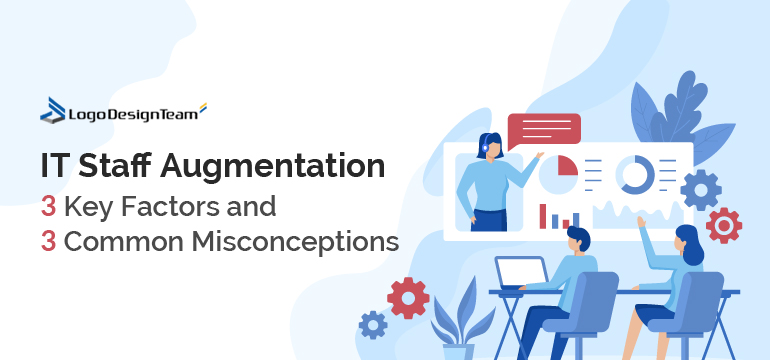A major trend in current business practices is the growing reliance on contingent workers worldwide. This approach isn’t new—it started when managers were temporarily loaned across organizational boundaries to cover for absences due to holidays, sickness, etc. Nowadays, contingent work takes many forms, with staff augmentation being one of the most prevalent.
IT staff augmentation service involves bringing in external staff temporarily to increase the capacity of your organization.
It’s a widely used strategy—the global staffing industry, a key provider of staff augmentation services, is believed to generate about $490 billion in yearly expenditures. Freelancing, another pillar of staff augmentation, has been present for ages but has gained prominence with the advent of worldwide freelance platforms. In the United States, about 34% of the workforce is engaged in freelancing, a figure that’s expected to rise in the coming years.
Selecting the Appropriate Staff Augmentation Approach
Organizations typically opt for a variety of providers to meet their specific requirements. When considering staff augmentation, the key factor is to identify your goals and what holds the greatest importance. For instance, if you need a machine learning specialist (a highly sought-after skill currently), focusing on cost may not be feasible. Similarly, if your project requires 100 people for a task that’s easily learnable, seeking highly skilled individuals might not be necessary. Given the wide array of staff augmentation models accessible to organizations, it’s essential to consider the advantages and disadvantages of each option before making a choice.
Deciding if Staff Augmentation is the Ideal Choice: 3 Key Factors and 3 Common Misconceptions
Factor #1: Duration of the Project
Staff augmentation can uniquely fulfill an organization’s needs, yet it’s not always the ideal solution. Generally, it’s more effective for shorter-term projects rather than lengthy ones that span months or years. However, for longer projects, a contingent worker might still be a viable option, where an outsourcing model could be more suitable than staff augmentation. Staff augmentation providers often show flexibility in such negotiations.
Factor #2: Confidentiality
Certain projects involve sensitive information and crucial intellectual property (IP). In these situations, staff augmentation options should be thoroughly scrutinized. The decision often stems more from a sense of psychological security than solid evidence. Realistically, contracts with contractors can be just as binding as those with permanent employees. It’s notable that a significant data breach in history was perpetrated by a subcontractor, formerly with a top-tier services company, now residing under asylum in Russia. The lesson: organizations must exercise extreme caution and deliberate pace when engaging augmented staff for highly confidential projects.
Factor #3: Adaptation Period
Regarding managing a contingent workforce, many organizations express dissatisfaction with their processes (refer to the accompanying graph). This dissatisfaction might stem from misconceptions regarding the context.
Context, or a deep cross-functional understanding, is advantageous in business settings. However, the significance of ramp-up time—where an employee acquires this context—shouldn’t be overlooked. Staff augmentation may not be the most effective approach for projects with high complexity, leading to extended ramp-up periods (though this can vary based on the capabilities of the potential augmented staff member).
For instance, a leading semiconductor firm experienced significant delays and costs due to the high complexity required for their project. They incurred almost a 50% cost increase; half of the augmented staff’s contract period was spent on understanding the context.
Misconception #1: Staff Augmentation as a Means to Avoid Costs
Some managers think that using augmented staff circumvents the expenses associated with benefits for full-time employees. This view is flawed and shouldn’t be a reason for choosing augmented staff. In reality, staffing agencies cover benefit costs, which are then included in the rates charged to organizations. This misunderstanding can lead to higher expenses for augmented staff, whereas hiring full-time employees might have been more economical.
Misconception #2: Higher Expense of Staff Augmentation
Another common misconception is that augmented staff are more costly than equivalent full-time employees. The belief is that a contingent worker at $50 per hour is more expensive than a full-time employee.
This overlooks the employer burden. For a full-time employee with a $100,000 annual salary, the average global employer burden is around 23%, reaching 30–50% in some countries. This includes benefits like health insurance, 401K, and training costs. When these expenses are considered, using augmented staff can be quite cost-effective.
Misconception #3: Confusing Staff Augmentation with Managed Services
With the staffing industry’s relatively new and evolving terminology, confusion often arises between staff augmentation and managed services.
Managed services focus on a specific deliverable, often with a defined quality standard; staff augmentation is based on a job description and works on a time-and-material basis. An augmented staff member might be hired to write code for an unusual application at a company and be paid by the hour. In contrast, a managed service contractor would be engaged to develop a particular application to meet specific KPIs, being compensated upon project completion.




